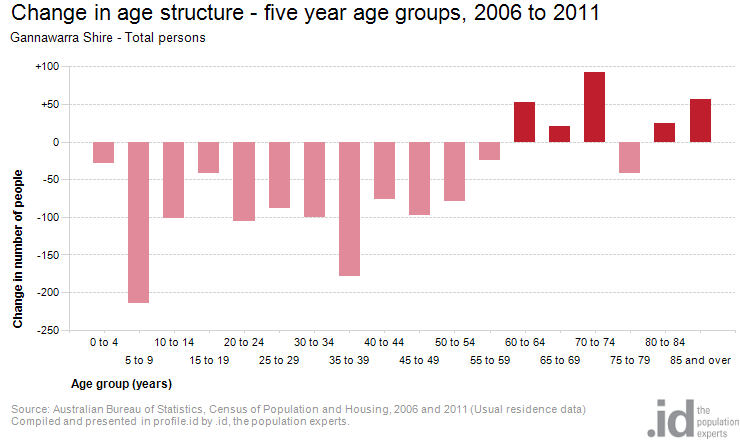Many rural areas of Australia have been experiencing a decline in population. This is not a new phenomenon, some areas have been declining since the late 19th – early 20th century. What has put a twist on this phenomenon however, is the ageing of our population. As birth rates in rural areas fall and young people move away for education and employment, those who are staying in rural areas are generally in their middle and older ages. This poses some interesting challenges for service delivery.
Gannawarra Shire in northern Victoria is a prime example of a rural community experiencing such a decline. Between the 2006 and 2011 Censuses the Shire saw a decrease in population of just over 900 people. This trend has continued since the Census and is forecast to continue. When looking at the change in age structure between 2006 and 2011, you can see that the majority of the decrease occurred in the younger ages, and the older ages increased.

So what does this mean for rural service delivery, especially in the area of health? As Ann Lason wrote in a recent book chapter, it means doing more for fewer. In essence, this means providing more frequent and more specialized medical services for a smaller, older population. This occurs because the rate of long term illness, injury and accidents increases with age. So how do you go about providing these services – especially when the level of provision is often based on the number of population in a certain area, not their characteristics. There are also a number of issues staffing medical services and hospitals in rural areas.
One idea that is frequently used in rural areas is to have visiting specialists, who consult in rural areas at a set frequency – for example once a month. While it would be wonderful for rural communities to have access to specialist services at all times it at least removes the need to travel long distances, which is known to deter people from seeking medical services. Another strategy that is used is to give rural GPs further training so they can perform some specialist treatments. This is mostly used in obstetrics, so rural doctors can attend births and perform cesareans.
Emergency medicine however remains difficult to provide in rural areas. In some places, there is a nurse on duty, who contacts in on-call GP if necessary. This is how the Kerang District Health Service provides emergency treatment to the residents of our example rural area, Gannawarra Shire. Of course though, there are still cases where patients need to be transferred to larger regional centres or cities for treatment.
These difficulties are likely to continue in the future as our rural population continues to age. Yet who knows where technological advances will take us – soon with video link we might be able to go to the doctor without even needing to leave home!












